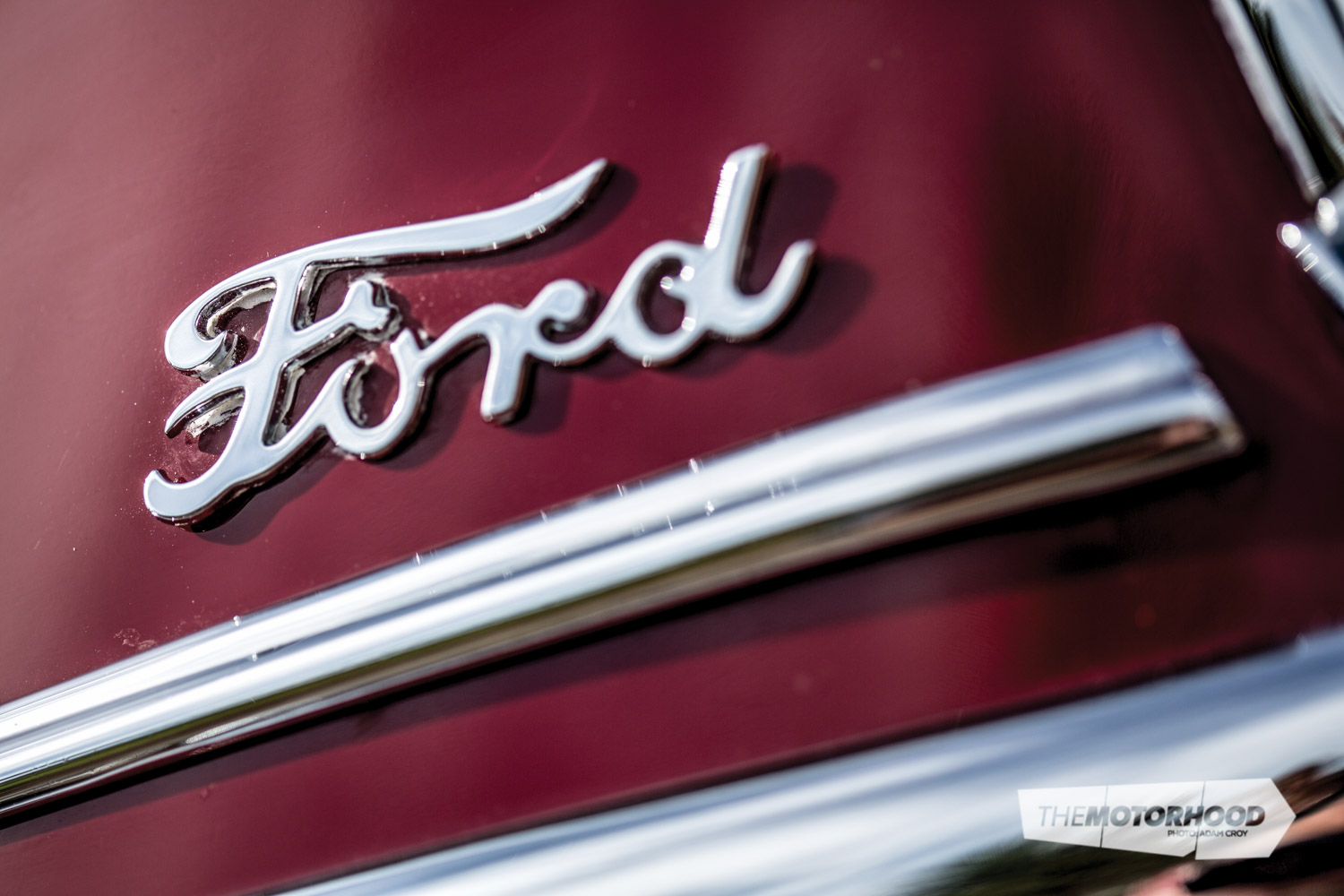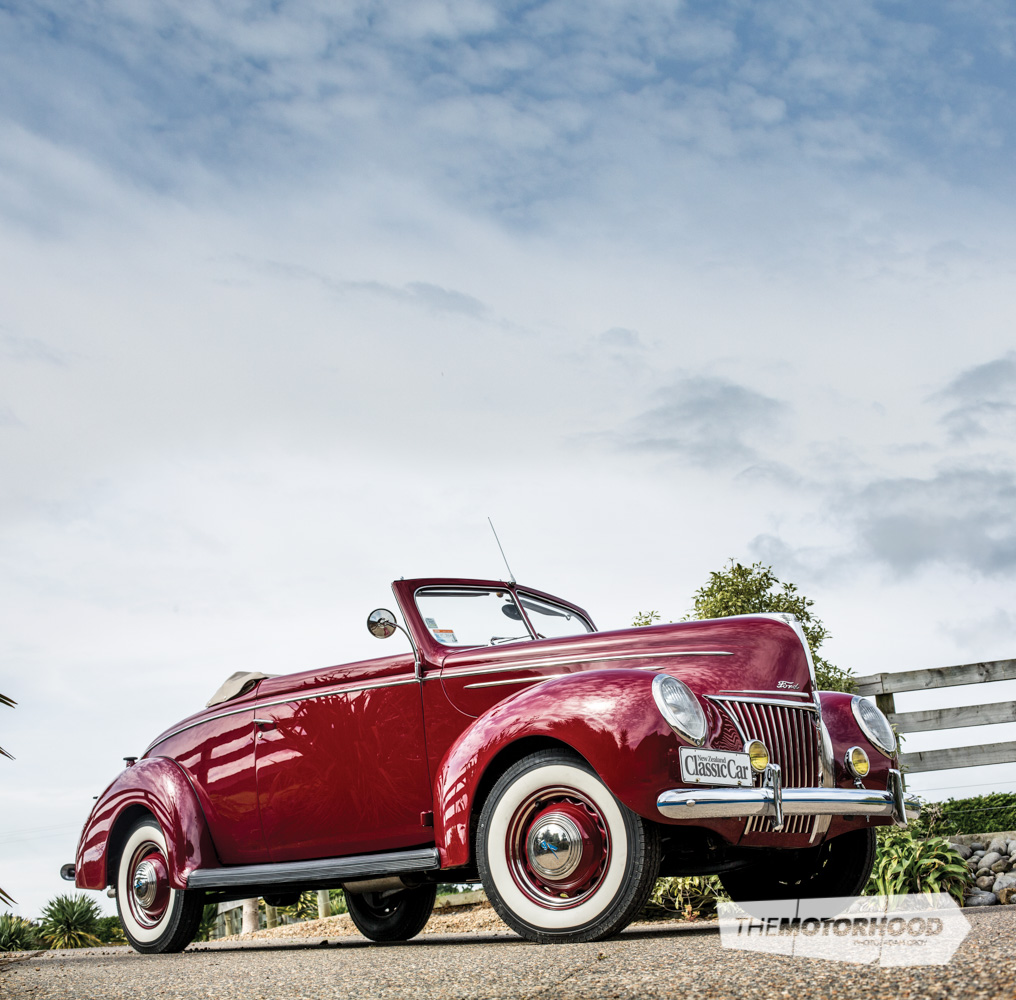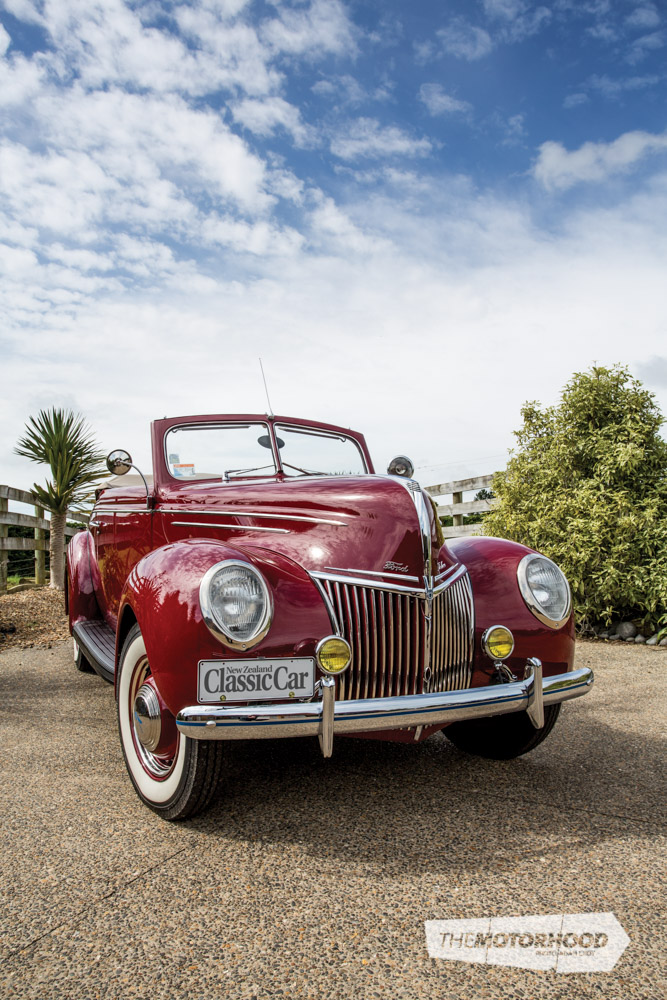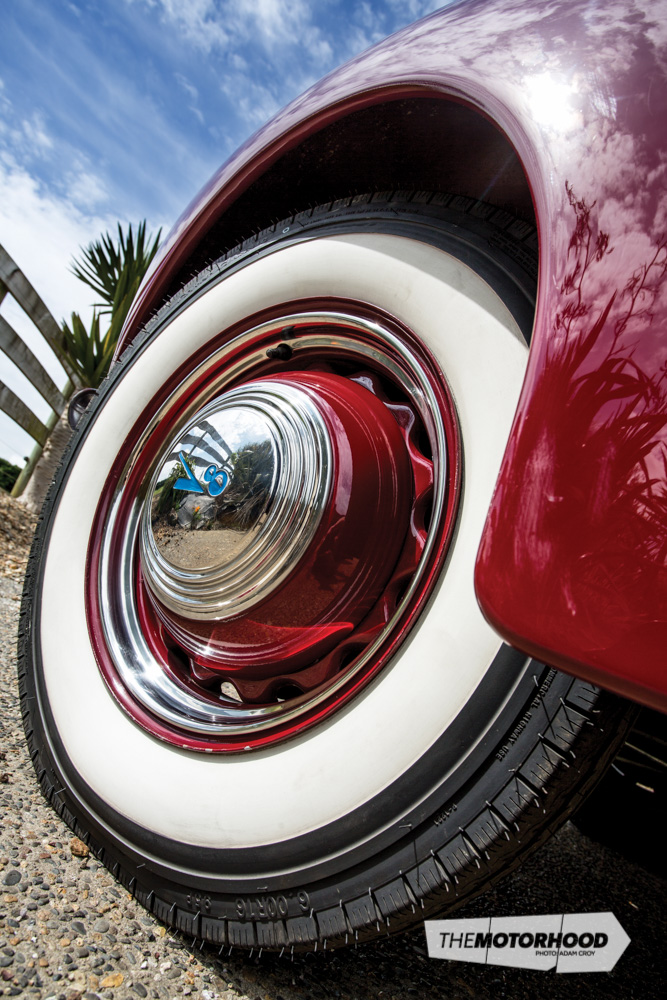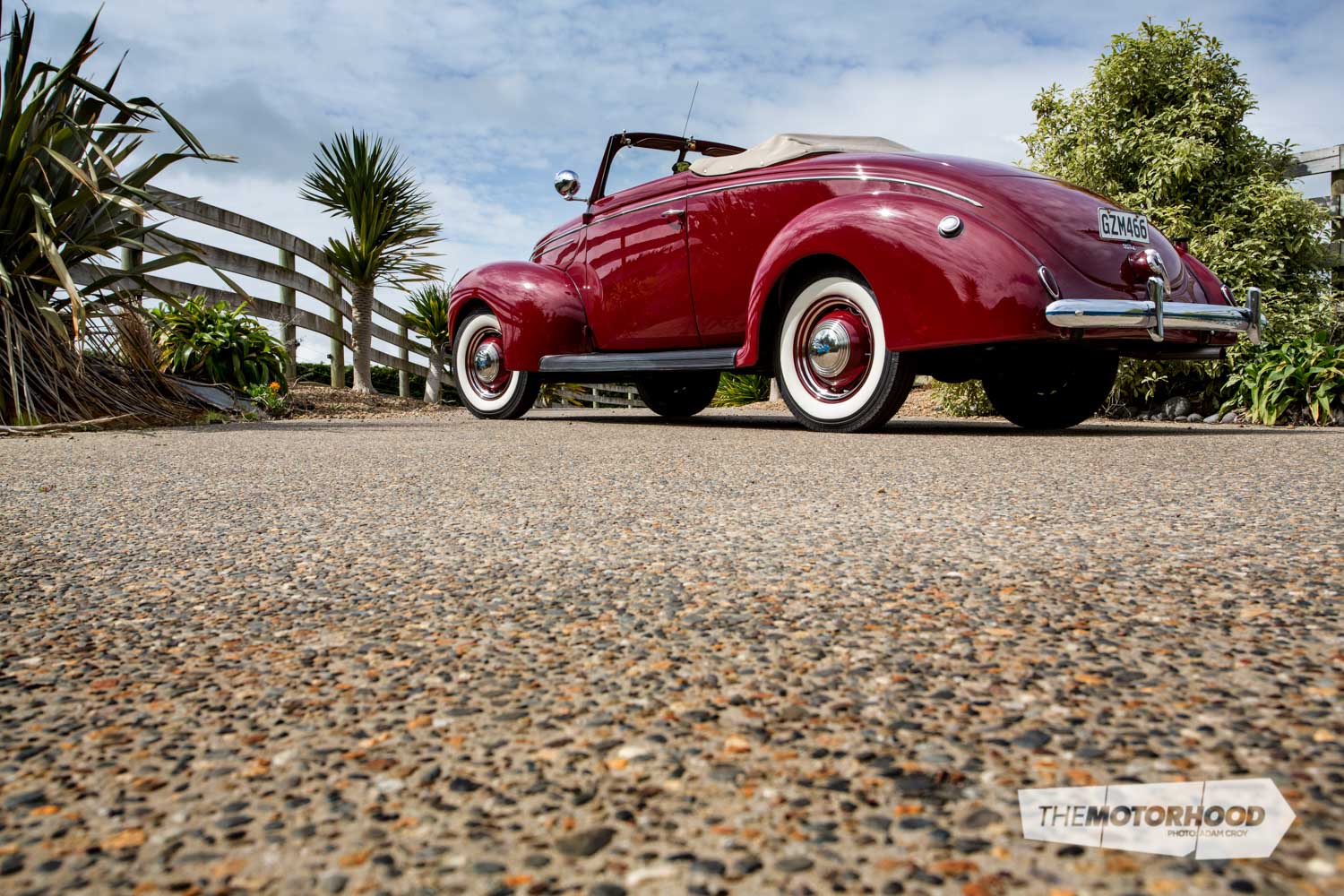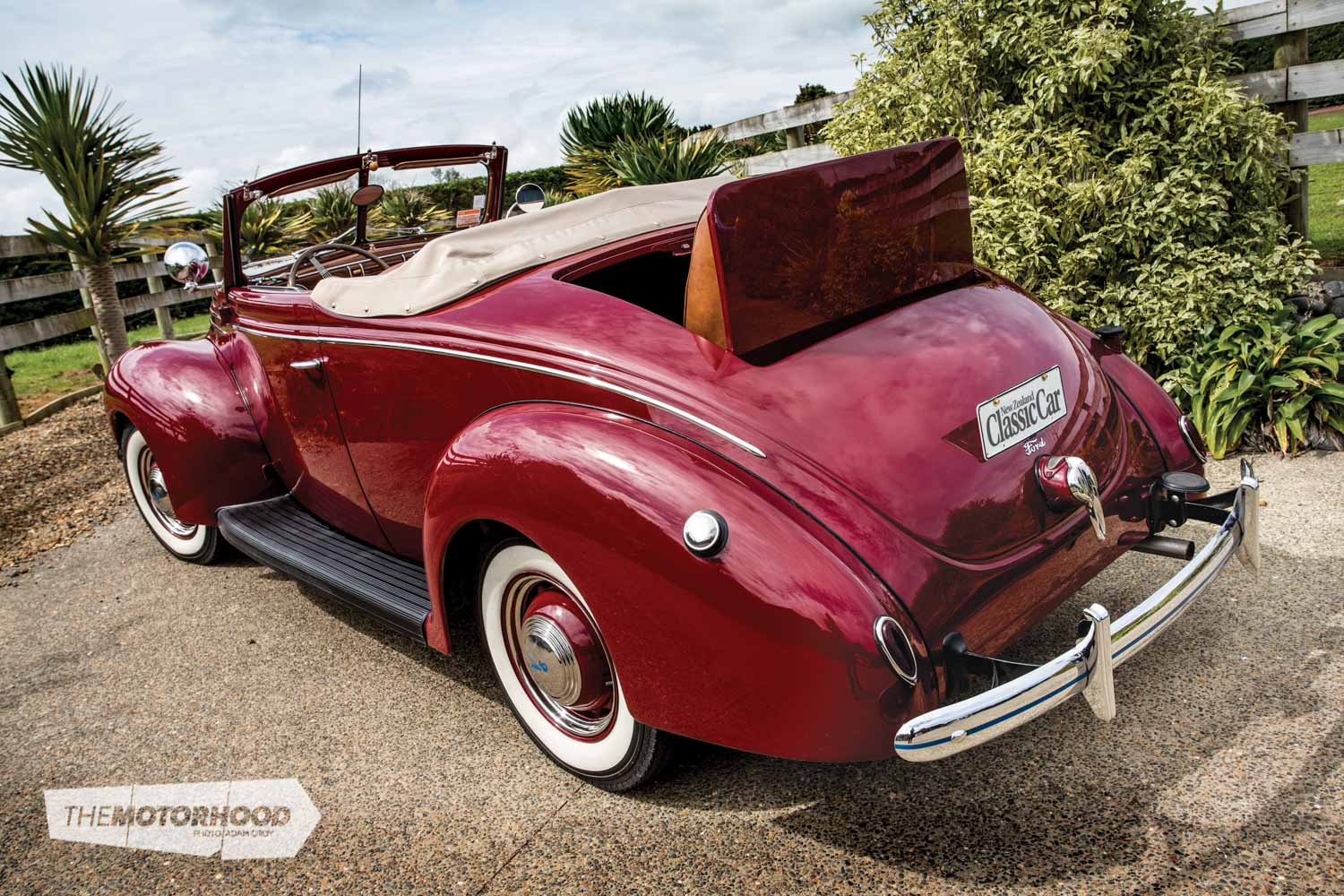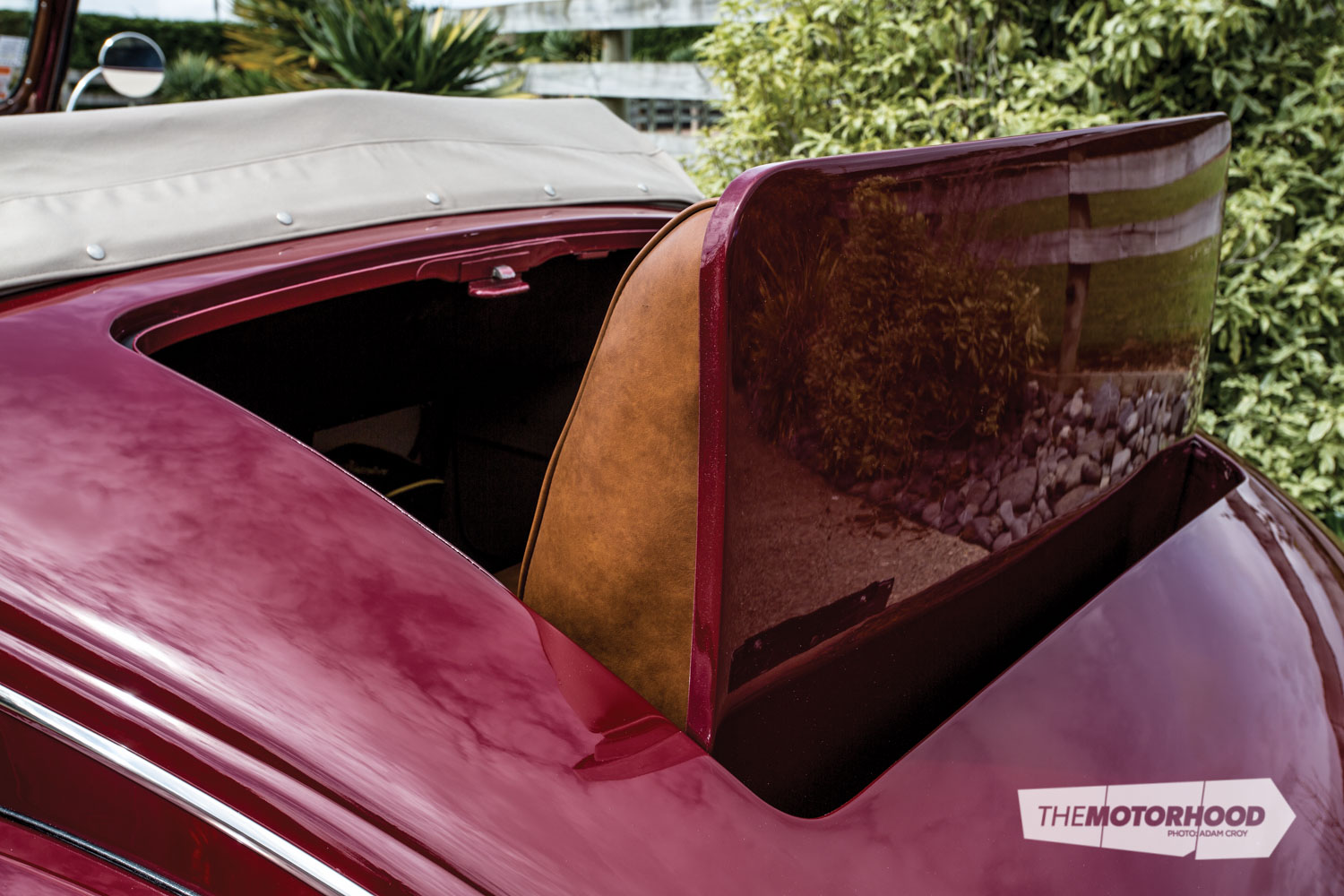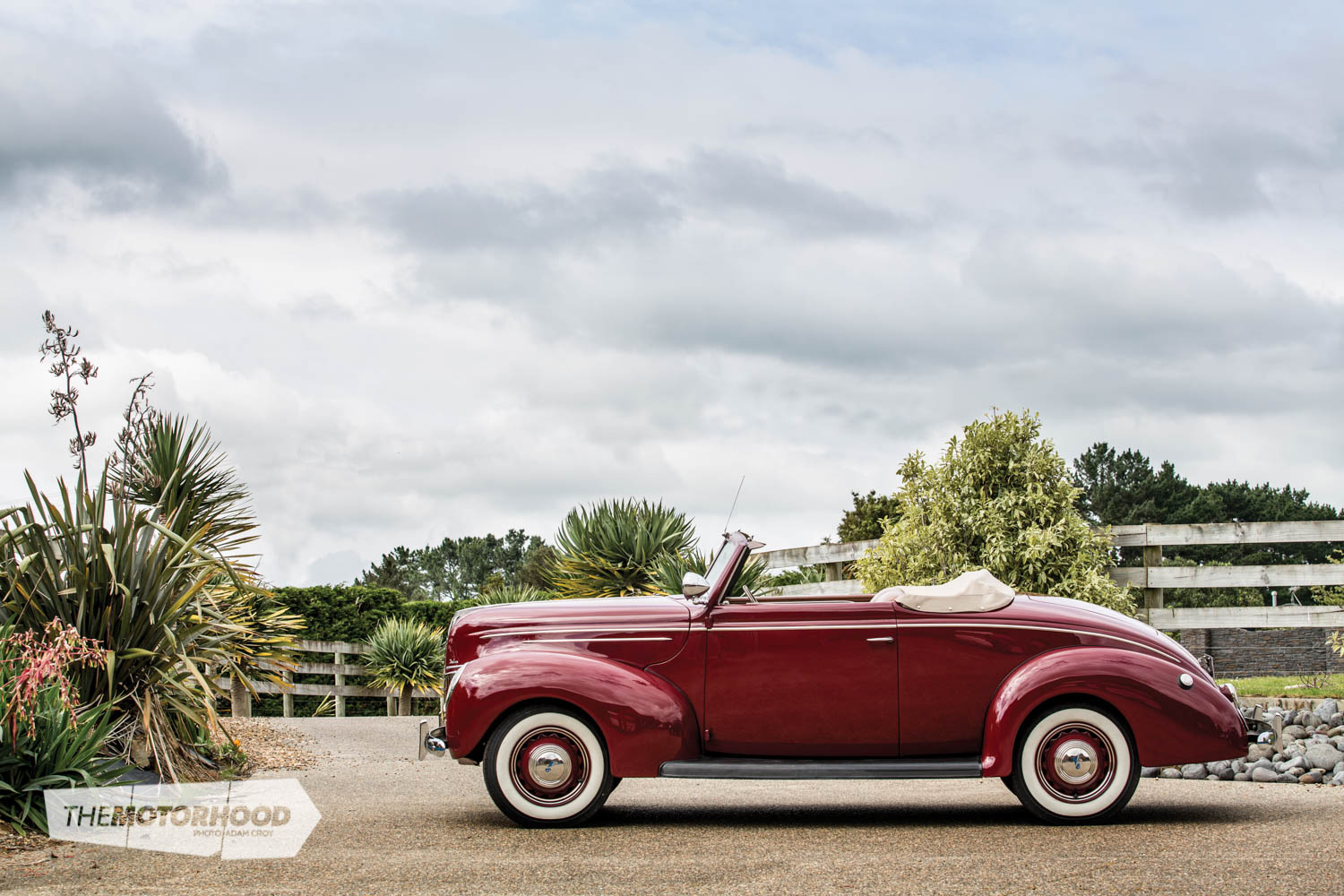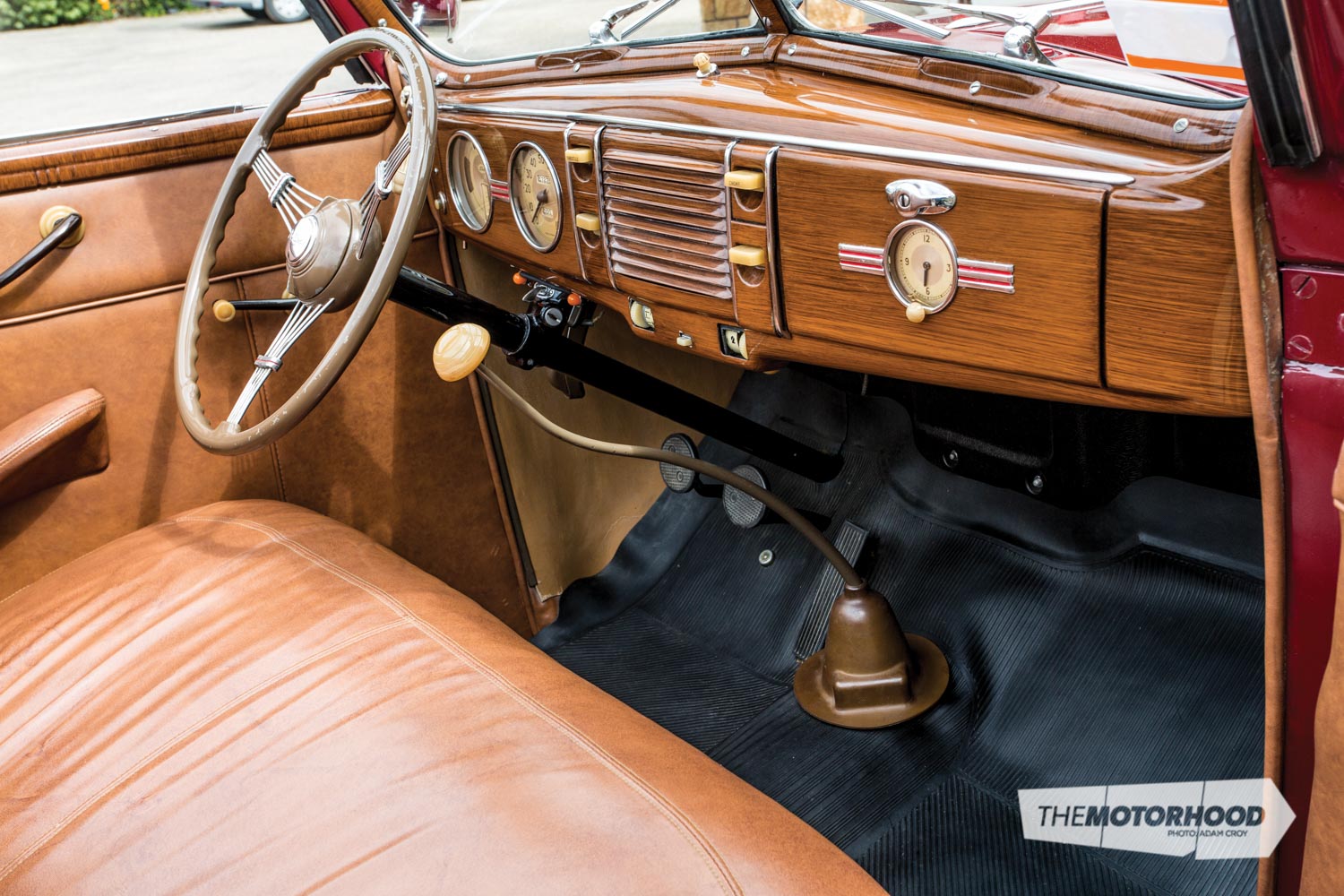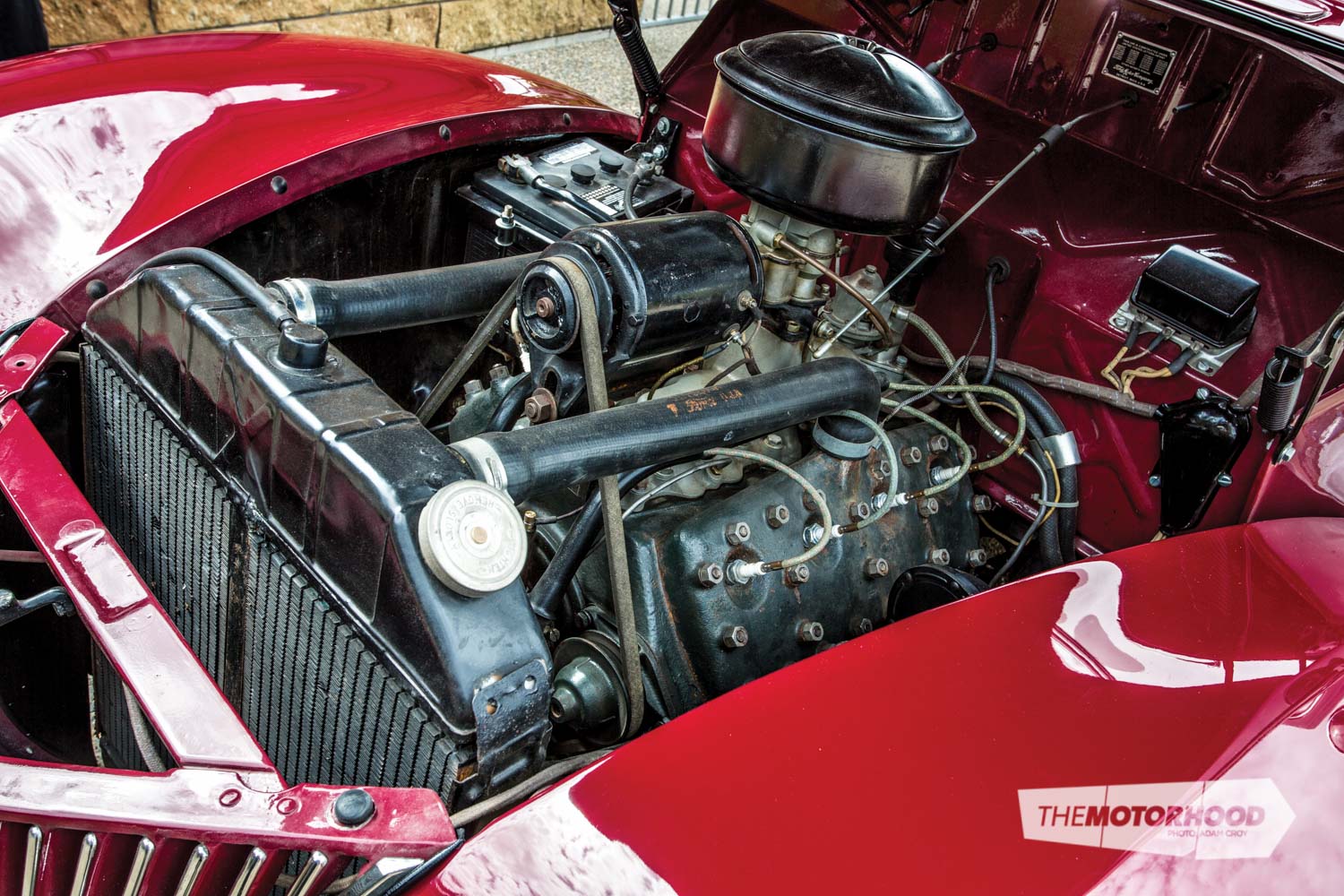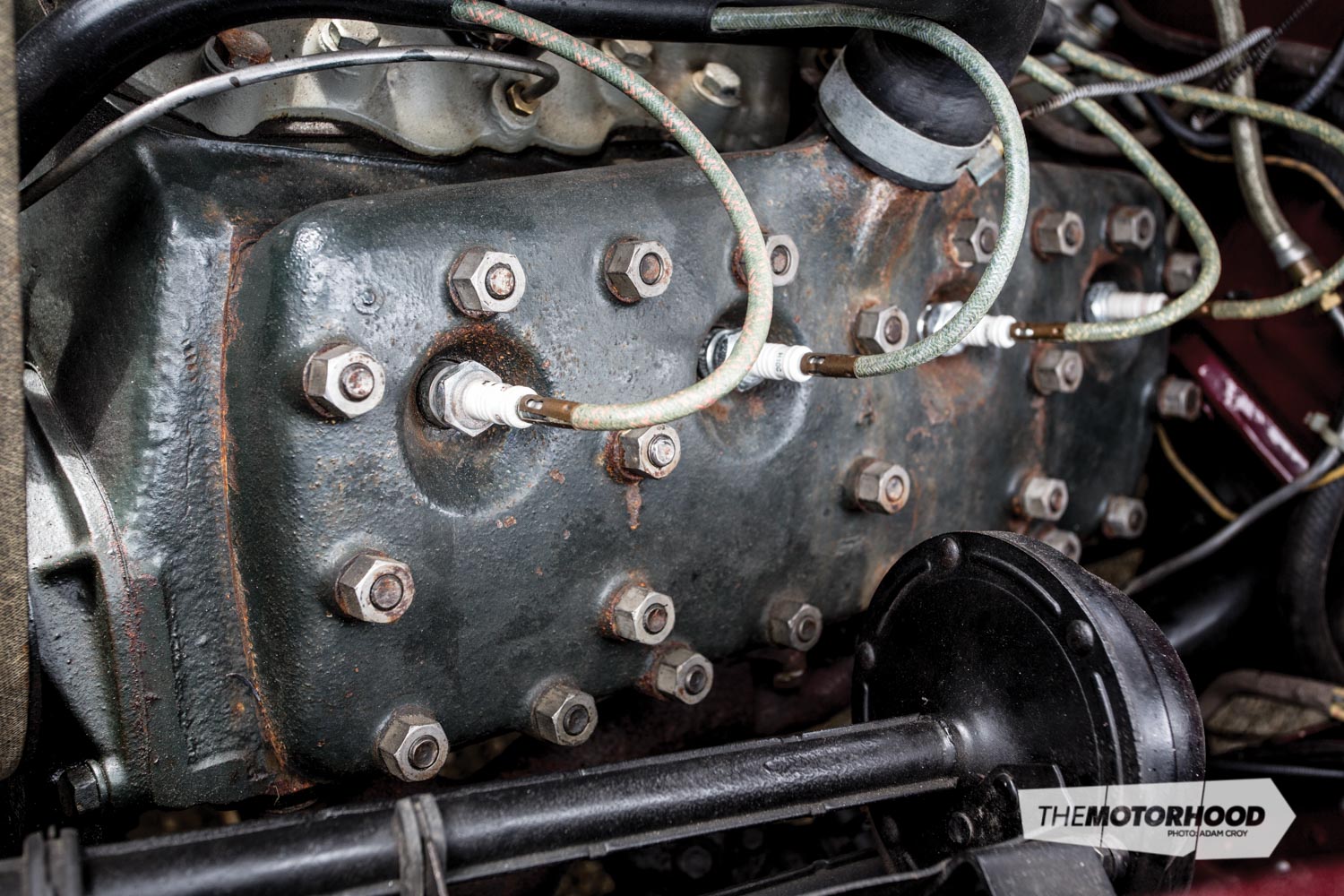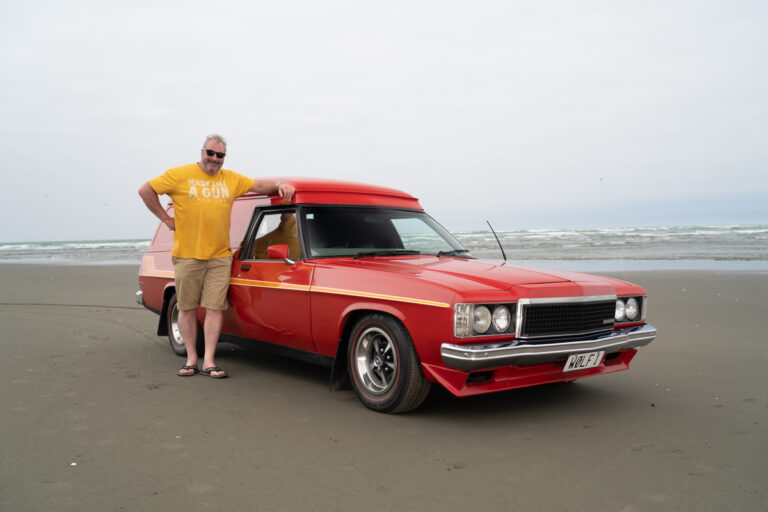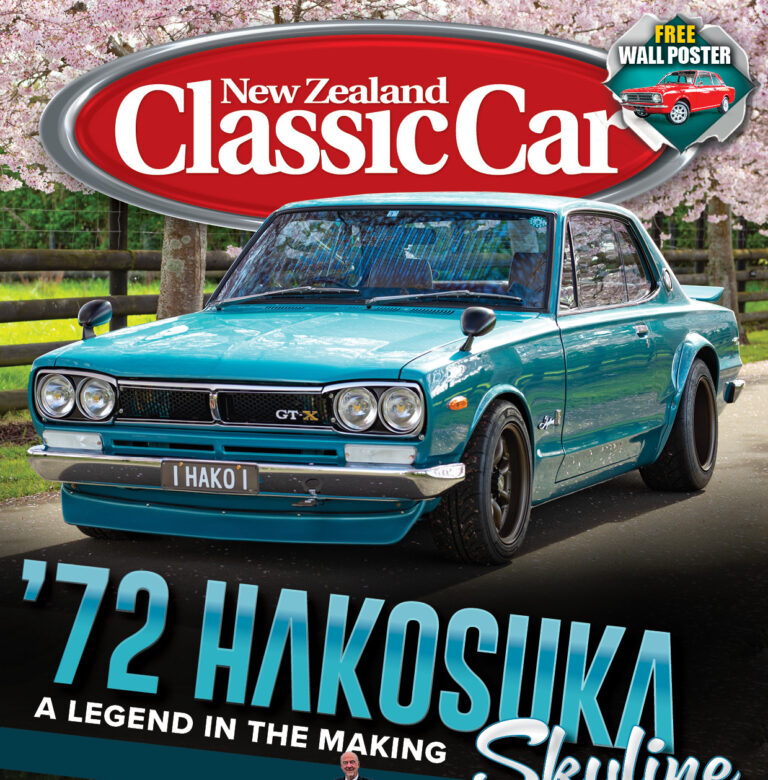data-animation-override>
“Looking over the sleek lines of this gorgeous 1939 Ford coupe convertible, there’s definitely something to be said about Stateside pre-war classics”

With its classic styling and handsome demeanour it’s hardly surprising that Ford’s Deluxe series of cars have always been desirable amongst collectors and hot rodders alike. Indeed, when it comes to the latter enthusiasts — like it or not — seven decades of customization by devoted fans have elevated these Fords to a lofty status as one of hot rodding’s greatest cultural icons.
Advanced design

Ford’s 1939 line-up was not only technologically advanced, but according to many, also included some of the best-styled cars to ever come out of Detroit.
Having introduced its two-tier styling for the first time in 1938, Ford offered buyers the option of either the base Standard or the upmarket Deluxe model — it seemed that Ford had a car for everyone. In 1939 the Standard model was fitted with nothing more than a modified 1938 body, whilst the Deluxe model received an entirely different look complete with sleek, new frontal styling distinguished by a vertical stainless-steel grille. Uncluttered front guards boasted smoothly styled teardrop headlights that blended in nicely to the new guards, while the restyled bonnet was missing the old-style louvres, these now replaced with a simple and elegant trim ‘spear’ down the side. The running boards remained, an intrinsic item on all cars within Ford’s model line-up for 1939.

The Standard models had only four body styles, but the Deluxe line featured a coupe, Tudor sedan, sedan, station wagon, convertible coupe, and the fancy four-door delivery station wagon.
Changes were not just limited to cosmetics, as the ’39 Ford Deluxe models also included mechanical changes — for instance, the old mechanical braking system was now replaced with an infinitely more effective hydraulic set-up. This was a case of better late than never, as Henry Ford had resisted installing hydraulic brakes for many years, finally succumbing three years after Chevrolet and 11 years after Plymouth included such modern niceties within their automotive ranges. And 1939 was also the last year that Ford offered the popular rumble seat for the convertible coupe.
A life in cars

If you happened to have a passing interest in stock-car racing, especially from a few decades ago, then the name Antonievich will undoubtedly sound familiar to you. Or, more probably, you’ll remember the antics of one such larger-than-life stock-car driver — Louie ‘The Leopard’ Antonievich. Louie was renowned for his passion for just about anything with wheels and an engine, particularly old American V8s and hot rods. However, he is probably best remembered for his flair, and competitive battles on the dirt oval, doing what he loved best — racing stock cars such as his trusty old ’38 Chevy coupe. Tony, Louie’s son, has restored that famous Chevy back to its former glory, and still brings it out to play on the odd occasion, such as at the 2015 Leadfoot Festival.
Tony remembers working on cars with his father and brothers from a very early age, and would help his father strip down old cars. Louie’s workshop had old Ford and Chevy engines lying around everywhere, as well as just about every other kind of engine you could think of, together with loads and loads of car parts. One of Tony’s jobs was to strip down old gearboxes and put aside the parts worth saving in an old nail box, and then throw away the broken or worn bits for scrap. Gearboxes would then be rebuilt using all the good parts left over from other units. Not only was Louie an A-grade mechanic and engineer, he also owned tow trucks, and that meant he would collect damaged cars, which he would often end up buying and dismantling for parts.

Tony recalls his father as being a very sociable character, who would often have his good friends visit to help out on whatever the current project was — so it wasn’t uncommon for Tony, as a 10-year-old, to be sitting around the workshop with his father and famous Kiwi racers such as Red Dawson, Johnny Riley and Garth Souness, to name but a few. According to Tony, these guys were just as crazy as his father, they would often get bored sitting around the workshop, and would occasionally relieve that boredom by racing each other around the block in their old V8s.
When Tony was 16 he bought a ’57 Chevy four-door sedan, around the same time as he started his apprenticeship as a panel beater. As he progressed as an apprentice, he also completely restored the bodywork on his Chevy, and installed a big block 396ci (6.48-litre) Chevrolet V8 engine — quite a big deal in the early ’70s. A big block engine with oodles of power under the bonnet meant one thing — drag racing. Tony frequently attended meetings at Meremere along with the likes of Dave Loose and Ivan Junovich, now household names amongst the classic V8 and hot rod fraternity.
Many years later Tony would set up a business in Pukekohe — Counties Mufflers — but his heart was in aviation, and he decided to pursue this passion with more vigour, and went to work at Ardmore as an aircraft engineer. Unfortunately that business closed down, so Tony set up his own business maintaining aircraft and helicopters.
Tony went to work for Avspecs in Ardmore in 2006, restoring World War II aircraft. At about this time, he purchased a 1941 Stearman Biplane that he still owns today, along with a Cessna and a helicopter.
Retro touring

Tony admits that his wife, Duane, has given him pretty much a free rein over the years regarding his passion for aircraft, classic cars, and, more recently, rolling beautifully restored cars out of his workshop for satisfied customers. Finally, the time had come for Tony to repay her years of loyal support by building something that she wanted — a retro-style caravan that they could enjoy together.
It was Duane who began the search for a caravan, eventually finding a New Zealand–built 1973 4.2-metre Oxford caravan in the Coromandel town of Matarangi.
This was subsequently purchased, and once back in Tony’s workshop, was closely inspected, before he decided to completely gut the caravan and rebuild it to Duane’s exacting specifications. Comfort was the key, and the first item to be installed was a super-king-size bed, along with retro-style interior fittings throughout.

The overall colour scheme for the caravan was a no-brainer given the fact that their gorgeous 1955 Chevy Sports coupe tow car is painted Gypsy Red and Ivory White — and the caravan’s interior was also reupholstered to match the Chevy’s interior. Tony and Duane began the online search for retro-style items such as a fridge, microwave oven, toaster, radio, hot-dog machine and milkshake maker, to name a few. Final touches to the caravan’s exterior included 1959 Cadillac tail lights and front clearance lights, as well as period-style chrome Lucas number-plate lights.
Carolina coupe
With the Route 66–style caravan sorted, the next step was for Duane to choose her own car. She is certainly no stranger to the hot rod and drag racing scene. She worked as a volunteer time keeper back in the early days at Meremere Drag Strip, and her sister was married to well-known hot rodder and drag racer Ralph Wright.
Tony and Duane have been members of the Pukekohe Hot Rod club since the early 1970s. It is about to celebrate its 50th Anniversary in September.

Duane went on the club’s first tour of America with three friends. While she was enjoying the sights her trip was interrupted somewhat by a few requests from Tony, who was back in New Zealand and wanted some big block Chevrolet engine parts to be picked up, which would not only take up valuable luggage space, but also meant she’d have to cut back on her spending money. Another hot rod club member also asked that she bring back a set of mag wheels. Luckily Duane was able to convince her three friends to share the load, and each brought one wheel back.
Initially she started searching for 1934 Ford convertibles, but when she saw the ’39 she made her decision — “That’s what I want!” Tony was less impressed with Duane’s choice — because these cars are one of the rarest Ford models, they fetch high prices in the US. However, the search for a 1939 Ford convertible was soon on and, in time, the couple found one that they both liked on the Hemmings website. The car was located in Vermont, and from what Tony could ascertain, it was a good one. He managed to find out that an elderly gentleman had ‘discovered’ the car about 15 years before in South Carolina, where it had been in storage awaiting restoration since the late 1960s or early ’70s.

Originally sold new in South Carolina, when the Ford ended up in Vermont it was the subject of a full restoration that cost, according to the receipts, over US$80,000.
The owner was very happy with the final result, and drove it around for a while, but didn’t venture very far due to the fact he was in his 80s, and just travelled to destinations close to his home. In total, he only put around 5000km onto the Ford’s odometer.
One of his chosen destinations was to visit a friend whose hobby was restoring old steam cars, and on several occasions his friend offered to purchase the beautifully restored Ford should it ever come on the market. As it turned out, the aged owner eventually decided to part with his pride and joy, and sold it to his friend, who bought it for his wife. They owned the car for about six years before deciding to sell it because it was getting very little use, and listed it on the Hemmings website. And that’s where Duane found it a couple of years ago.

Not surprisingly, she was quite excited, and Tony wasted no time in contacting the car’s restorer for a complete rundown on the restoration. He learned that the Ford’s body had been in perfect original condition prior to the restoration, requiring only minimal work to bring it back to its former glory in the paint scheme it was sold with. In fact, Tony has been unable to detect any panel repair work at all. The chassis was completely refurbished, and the flathead V8 engine, manual gearbox, differential, brakes, and steering were entirely rebuilt to original specifications. The interior was also totally restored, and even includes the original factory radio. Ford’s nicely designed deluxe banjo steering wheel sets off the interior with its front bench seat beautifully. The original wheels and period-style whitewall tyres add the finishing touch to this superb vehicle.
Tony also had a full independent assessment of the car, which passed with flying colours, confirming his gut feeling that it was indeed a great vehicle. It was exactly what Duane wanted — stock standard and fully restored, and when it finally arrived in New Zealand, she wasn’t disappointed.
1939 Ford Deluxe Coupe Convertible
Engine: Ford flathead V8
Capacity: 3.6-litre (221ci)
Bore/stroke: 78x95mm
Valves: Side valve
Comp ratio: 6.12:1
Max power: 63kW (85hp) at 3800rpm
Torque: 210Nm at 2000rpm
Fuel system: Two-barrel carburettor
Transmission: Three-speed manual
Suspension F/R: Transverse springs front and rear
Steering: Recirculating ball
Brakes F/R: Drum/drum
Overall length: 4953mm
Width: 1520mm
Wheelbase: 2844mm
Kerb weight: 1248kg
0–100kph: 16 seconds
Top speed: 193kph
This article was originally published in a previous issue of New Zealand Classic Car. Pick up a copy of the edition here:



